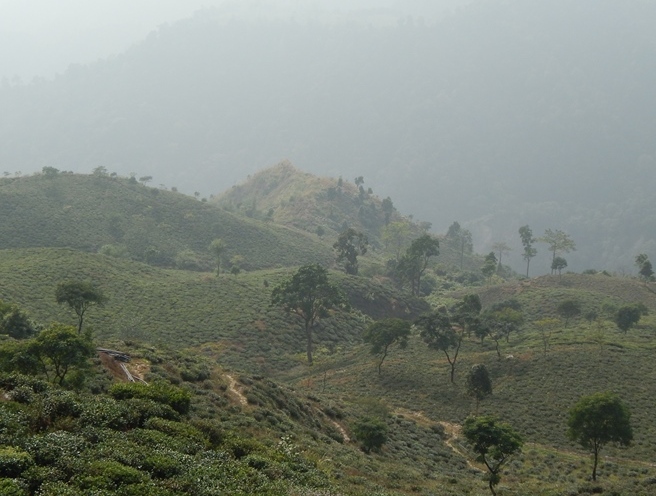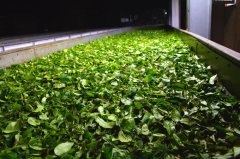Where does Darjeeling Tea come from? The Historical Story of Darjeeling Black Tea in India
What is Darjeeling Tea? according to the Indian Tea Committee, "Darjeeling Tea" means: tea planted, planted, produced, manufactured and processed in tea gardens in the hilly areas of the Sadar subzone (see annex for the current schedule), only in the hilly areas of the Kalimpong subzone. Including samabong Tea Garden, Ambiok Tea Garden, Mission Mountain Tea Real Estate and Kumai Tea Real Estate and Kurseong exclusion Branch jurisdiction list 20th, 21st, 23rd, 24th, 29th, 31 to 33 including Subtiguri as the new Chumta Tea Industry, Simulbari and Marionbari Tea Real Estate Kurseong Police Kurseong Darjeeling District Branch in West Bengal, India. Tea processed in factories in the above-mentioned areas. When brewing, there is a unique, naturally occurring aroma and flavor that has a unique aroma with light tea wine and impregnated leaves.

The story of Darjeeling Tea's history Darjeeling Tea began around 1850, when a civilian surgeon named Campbell did an experiment in the Darjeeling Beechuta garden at an altitude of 7000 feet and planted tea seeds. In 1847, the government decided to set up a tea garden in this area, so he was quite successful in planting. According to records, the first commercial tea gardens planted by British tea interest groups are Tukvar, Steinthal and Aloobari tea gardens. It was 1852, and all these plantations used seeds cultivated in government nurseries. Darjeeling was then a sparsely populated village, used by the army and some rich people as a mountain resort. Tea is a labor-intensive enterprise, which needs a sufficient number of workers to plant, care for, pick and finally produce tea. To that end Nepal has provided employment opportunities to people on the other side of the border. In 1866, Darjeeling had 39 tea gardens, with a total output of 21000 kilograms of tea. In 1870, the number of tea gardens increased to 56, and about 71000 kilograms of tea were harvested from 4400 hectares of land. Between 1860 and 1964, Darjeeling was founded with four tea gardens, while Darjeeling United Tea dates back to 1896. By 1874, Darjeeling found tea a profitable undertaking, with 113 tea gardens covering an area of about 6000 hectares. "
Important Notice :
前街咖啡 FrontStreet Coffee has moved to new addredd:
FrontStreet Coffee Address: 315,Donghua East Road,GuangZhou
Tel:020 38364473
- Prev
Why is Phoenix single fir bitter? How is the astringent feeling of mouth after drinking Phoenix Shan Cong to return a responsibility?
Phoenix Oolong Tea (Phoenix Dancong) what is Phoenix Oolong Tea Phoenix Oolong Tea is produced in Fenghuangshan, Chaozhou, Guangdong Province. Phoenix Mountain is composed of many peaks, which looks like the legendary Phoenix, so it is named Phoenix Mountain. Phoenix Oolong is also called Phoenix Oolong. Phoenix means Phoenix in Chinese. In fact, many people call it Dancong tea. Phoenix oolong tea variety Phoenix oolong tea is Yuwu
- Next

Flow chart of how to make Darjeeling black tea from India, the three famous black tea brands in the world.
Darjeeling, translated from Tibetan, means the land of thunder and lightning, a priceless gem of a town in the lower Himalayas. Darjeeling's history seems to begin with a station built on the mountain by the British East India Company (BritishEastIndiaCompany) in 1835. In this
Related
- The milk tea cup becomes smaller?! Overlord Tea Girl launches a new "Return to Yunnan" series
- Accused of selling counterfeit and high-priced coffee beans! Well-known boutique coffee brand "Oukelao" bowed and apologized!
- How to make espresso dumplings? Can I eat coffee and glutinous rice balls together?
- Save the unformed and stagnant powder cakes in one second! What is the problem with stagnant water in the powder bowl of the espresso machine?
- What does hand-brewed coffee stop mean? Why is it not recommended to make coffee by hand?
- Is it normal to smell like coffee? Why does coffee smell like alcohol? What's wrong with the strong smell of cold extract ice dripping ice brewed coffee?
- How to solve the problem that hand-brewed coffee extraction takes too long? Why is the water flowing so slowly when making coffee?
- The main points of making Australian white coffee, the proportion details, how does Australian white properly foam and blend the flowers?
- Can ice water make cold extract coffee? What is the difference between room temperature water and ice water for making cold coffee?
- What milk is best for making latte and white Dirty coffee? What is the difference between different brands of fresh milk and pure milk for making coffee?

